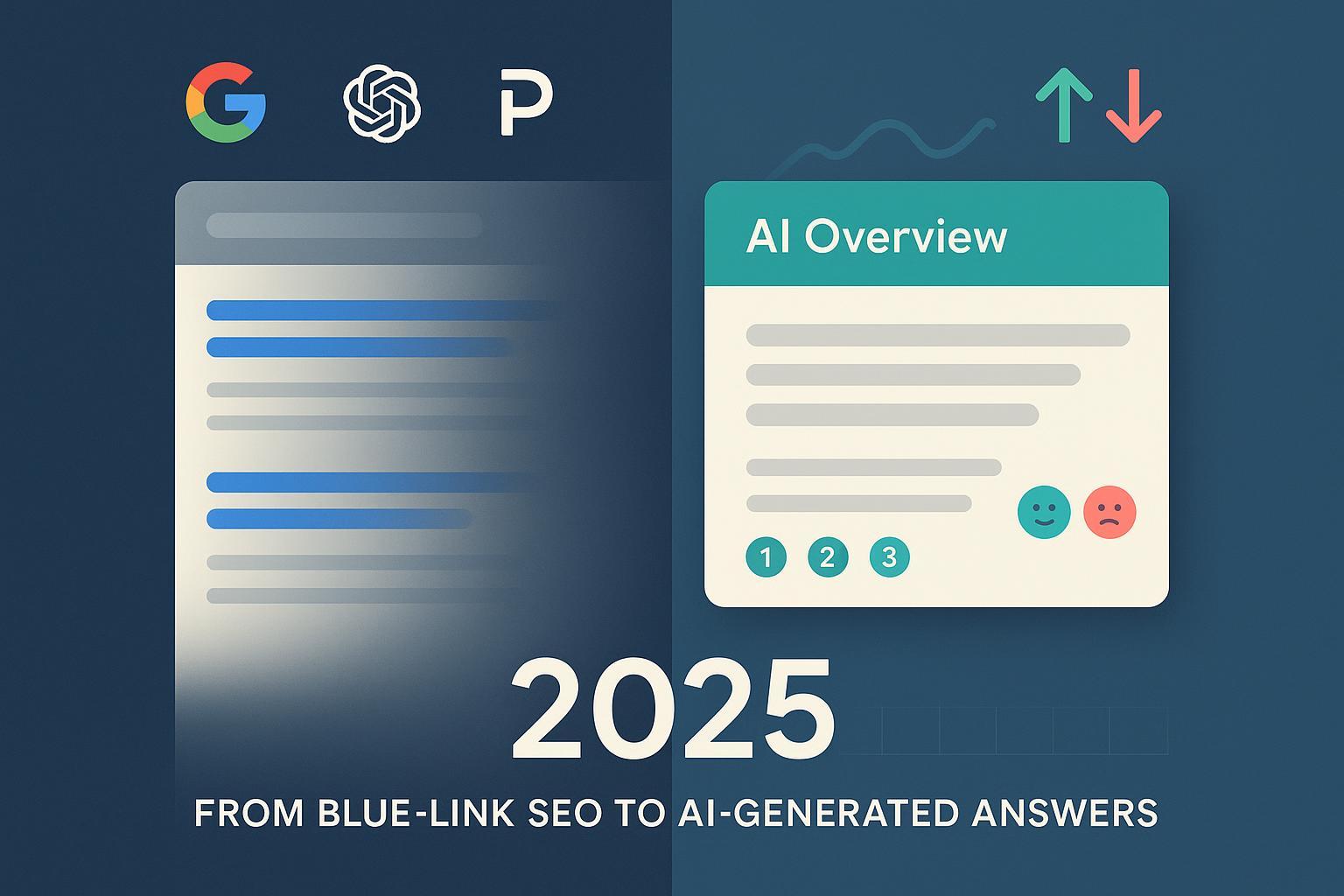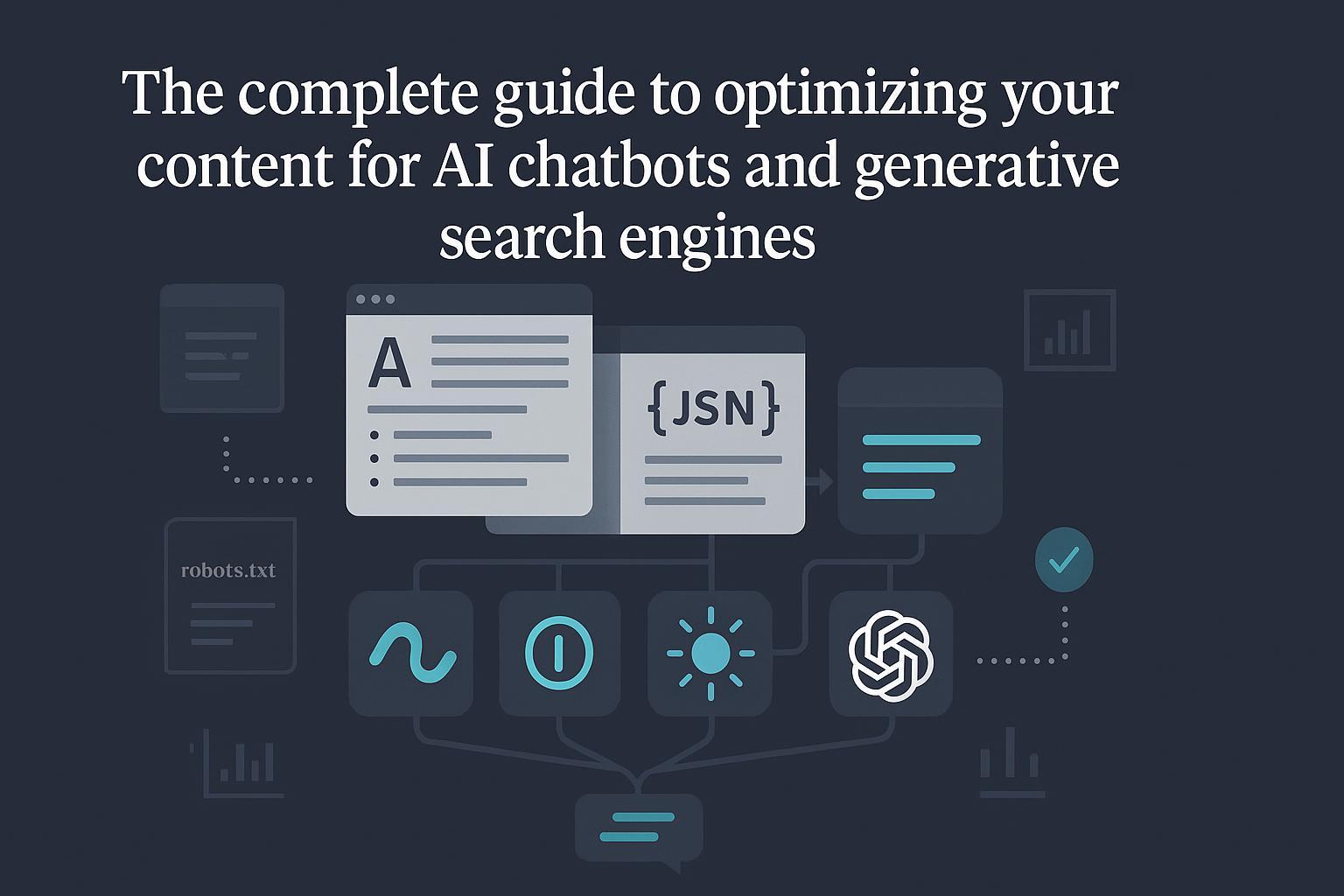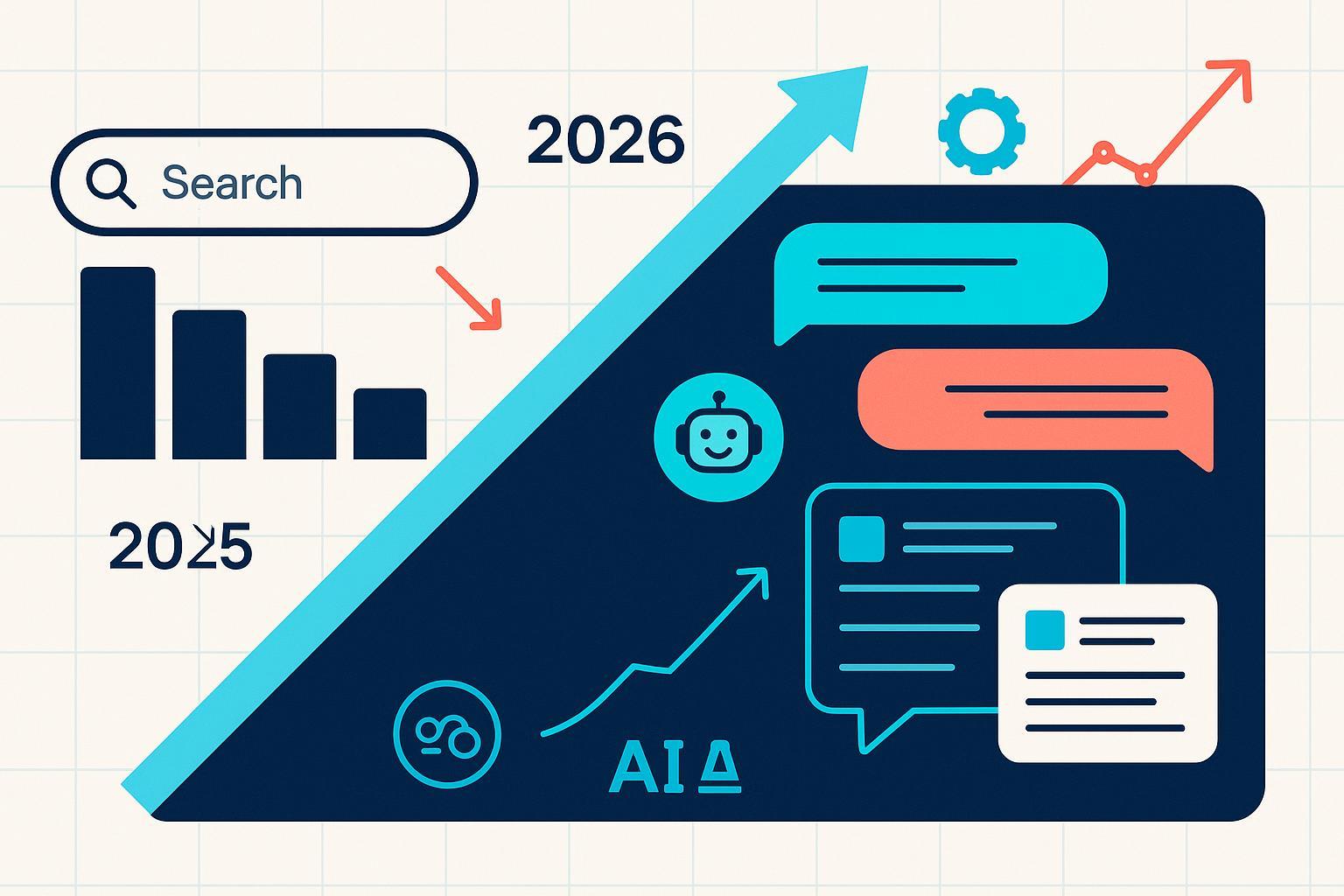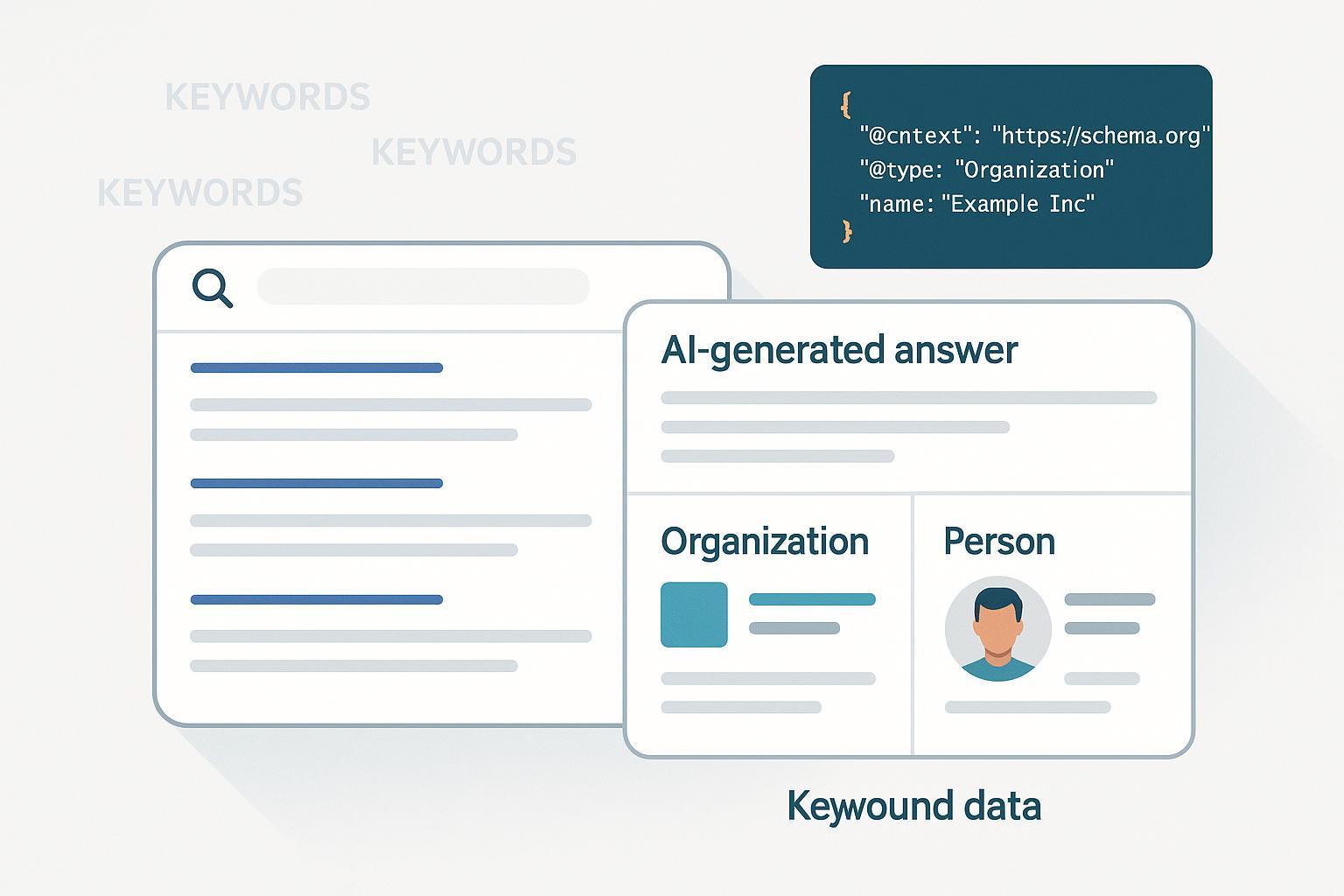Building Topical Authority for AI Engines: Advanced Semantic SEO
Discover proven workflows for semantic SEO, entity mapping, and synonym strategies to boost brand authority and citation in AI-driven search engines. Advanced best practices, workflows, and measurement tips included.

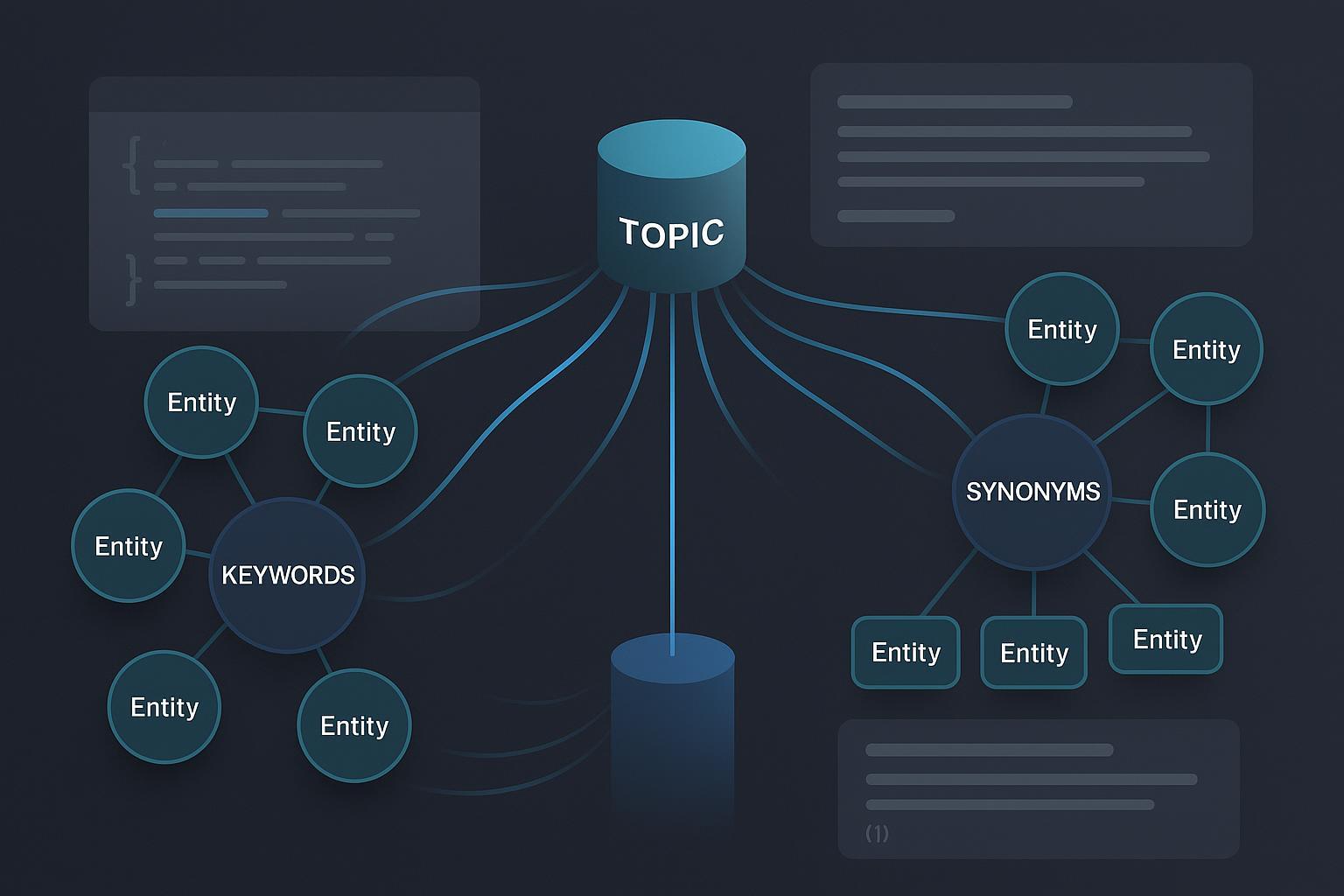
AI-driven search experiences (Google AI Overviews/AI Mode, ChatGPT, Perplexity) reward brands that demonstrate genuine topical authority—clear entities, strong semantic coverage, and coherent internal linking. In practice, that means planning content around the way language and knowledge graphs work, not just single keywords. Below is a practitioner’s blueprint for using synonyms and related phrases to build topical authority and earn more AI citations.
Why topical authority now
AI summaries increasingly siphon attention. According to Pew Research Center’s 2025 analysis, when an AI summary appears, users clicked traditional results in 8% of visits versus 15% without—roughly a 50% click-through reduction, as shown in the Pew Research Center 2025 short read on AI summaries and click behavior. For brands, visibility shifts toward being cited inside those AI answers and being understood as an authoritative source across related queries.
If you build entity clarity, cover natural variants (synonyms, related phrases), and link your topic graph coherently, AI engines and modern search systems can better understand when to surface you.
Principle: Optimize for understanding, not just matching. Write helpful content, model your topics as entities, and demonstrate breadth and depth through clusters and internal links.
For a full AI-first strategy, see the Geneo deep dive: Generative Engine Optimization — Ultimate Guide (2025).
The semantic core: entities, synonyms, and related phrases
Modern AI/search systems rely on entity and intent understanding. Synonyms and related phrases matter because queries vary, and LLM retrieval favors semantic similarity and coherent context. However, avoid the outdated notion of “LSI keywords.” Leading resources explain Google does not use LSI; see Backlinko’s LSI keywords myths explainer for background. Focus on entities, co-occurrence patterns, and clear explanations that tie concepts together.
What this means in practice:
- Identify the real-world entities your topics revolve around (products, methods, organizations, standards, problems, tasks).
- Use synonyms and related phrases to clarify the same meaning across different query phrasings; don’t stuff—write naturally and precisely.
- Link related concepts explicitly in copy so engines understand relationships.
The workflow to build topical authority (7 steps)
Step 1: Define entities and intents (audit, 2–3 hours per pillar)
- Inventory your current content, SERPs, and customer questions to extract entities. A practical way to audit at scale is to run your pages through Google’s Natural Language API to see recognized entities and sentiment, then review manually.
- Triage 20–40 core entities aligned to business outcomes. For each, decide whether you have (or need) an authoritative page.
- Record intent variants around each entity: informational, navigational, transactional, troubleshooting.
Step 2: Build synonym and related-phrase maps (research, 2–4 hours)
- Use topic modeling and entity tools to seed your list: MarketMuse, InLinks, Clearscope, Surfer SEO. Combine outputs with human judgment and competitor SERP analysis.
- Practical rubric for inclusion:
- Include a synonym or variant only if it clarifies the same concept your audience uses (e.g., “topic clusters” ↔ “content hubs”).
- Include related phrases that naturally co-occur and help explain the entity (e.g., “FAQ schema,” “JSON-LD,” “SameAs” when discussing structured data).
- Exclude ambiguous variants that change intent materially.
- Organize variants into tiers: primary synonyms (near-equivalent), secondary related phrases (context-builders), and long-tail phrasing (user dialects, industry jargon).
Step 3: Design topic clusters and internal links (architecture, 1–2 days)
- Create a comprehensive pillar page for each core topic. Draft 8–15 cluster pages that answer tight, specific subtopics and use natural anchor diversity when linking.
- Internal linking rules of thumb:
- Every cluster links up to the pillar using descriptive, varied anchors (e.g., “semantic SEO framework,” “entity-based optimization guide”).
- Cross-link peer clusters when they share context; avoid overlinking.
- Surface pillars from top hubs (homepage/category) judiciously.
- For a tailored walkthrough on AI-era clusters, see Geneo’s guide on building topic clusters for generative AI search.
For general internal linking craft, this 2025 write-up is solid: Search Engine Land’s internal links SEO best practices.
Step 4: Draft and optimize with semantic coverage (production, ongoing)
- Write scannable sections that answer direct questions; include synonyms naturally where they improve clarity. Prefer explanation over repetition.
- Use headings and FAQs to capture common variations. Example patterns:
- H2: “What is entity-based SEO?” — Body explains, references related phrases (schema, SameAs, knowledge graph).
- FAQ: “Are ‘topic clusters’ the same as ‘content hubs’?” — Clarify equivalence and use both terms naturally.
- Keep copy human-first; avoid robotic term stuffing. If a variant feels forced, drop it.
Step 5: Add schema and entity signals (implementation, 1–3 hours per page)
- Choose specific types that fit the page purpose: Article, FAQPage, HowTo, Product, Organization. Google supports several formats, but favors maintainability; see the intro to structured data markup.
- Align schema with visible content and policy; for Article pages, follow Google’s Article structured data guidelines.
- Reinforce entity identity via SameAs (link official profiles, Wikidata/Wikipedia where appropriate), and nest schemas properly.
- Validate with Google’s Rich Results Test and Schema Markup Validator.
Example JSON-LD snippet for an Article with a clear entity reference:
{
"@context": "https://schema.org",
"@type": "Article",
"headline": "Semantic SEO for Topic Clusters",
"author": {
"@type": "Person",
"name": "Alex Rivera"
},
"publisher": {
"@type": "Organization",
"name": "Example Co",
"sameAs": [
"https://www.wikidata.org/wiki/Q4830453",
"https://twitter.com/exampleco"
]
},
"datePublished": "2025-06-15",
"mainEntity": {
"@type": "Thing",
"name": "Topic cluster",
"sameAs": "https://en.wikipedia.org/wiki/Cluster_(content)"
}
}
After you implement schema and entity signals, a deeper AI Overviews/MUM-aligned walkthrough is here: entity, schema, and Google MUM/AI Overviews best practices.
Step 6: Publish with the right controls (technical checks, 30–60 minutes per page)
- Ensure indexability: HTTP 200 status, no accidental noindex, JavaScript rendering passes.
- Confirm snippet and robots directives align to your goals: max-snippet, nosnippet, data-nosnippet. Google’s robots meta tag specifications explain the controls.
- Favor helpful, people-first content; comply with Google’s 2025 guidance on AI search experiences in Top ways to ensure your content performs well in AI search.
Step 7: Monitor AI citations, sentiment, and iterate (operational, monthly cadence)
- Build prompt panels for each pillar (10–20 practical queries). Test on Google AI Overviews/AI Mode, ChatGPT, and Perplexity monthly.
- Log brand mentions, citation links, sentiment tone, and competitors cited.
- Practical micro-example: Track citations and sentiment across AI engines using Geneo. Disclosure: Geneo is our product; we include it here because it centralizes AI citations, brand mentions, and sentiment across engines, and helps teams compare baseline vs. improvements.
- Iterate content, schema, and internal links where coverage is weak; re-test prompts and track trend changes.
For broader trust signals in AI search, see Geneo’s guidance on E-E-A-T best practices for GEO.
Advanced techniques and caveats
- Embedding-based clustering for synonym expansion: Where tool suggestions plateau, use embeddings (e.g., OpenAI) to group related phrases by vector similarity, then review manually for precision. Start small and validate against your audience language.
- Entity disambiguation: If a term maps to multiple entities, add distinguishing context (industry, location, version) and link to authoritative identifiers (SameAs). Clarify in copy to reduce ambiguity.
- Schema validation pitfalls: Mismatched schema and visible content can limit eligibility in AI features. Keep schemas current on dynamic pages, and avoid marking content types you don’t actually present.
- Tool selection: MarketMuse is strong for topic modeling and coverage planning; see their topical authority primer. InLinks excels at entity recognition and internal links off entity mentions. Clearscope and Surfer SEO assist with semantic term coverage in editors. Use tools as aids—final decisions should be human-led.
Measurement and governance
Operationalize your AI visibility program with concrete KPIs and cadence:
- AI share of voice: Percent of tested prompts that mention your brand.
- Citation coverage: Percent of AI answers that include a link to your domain.
- Sentiment trend: Tone toward your brand in AI answers over time.
- Organic impact proxies: Changes in traditional CTR on queries where AI summaries appear; attribution is imperfect, so combine server logs and controlled tests.
- Cadence: Monthly monitoring with a quarterly strategy review; maintain a change log for content, schema, and internal linking adjustments.
Practical checklists you can run now
Entity and synonym mapping (setup)
- Identify 20–40 core entities aligned to revenue or adoption.
- Extract synonyms/variants using tools plus manual SERP review; tier them by importance.
- Define one authoritative page per core entity; document preferred anchor text and acceptable variants.
Topic clusters and internal linking (architecture)
- Draft 1 pillar per topic; outline 8–15 cluster pages with unique intents.
- Map pillar ↔ cluster links and sensible peer cluster links.
- Surface pillars from high-authority hubs; maintain anchor diversity.
Content production and schema QA (quality)
- Write scannable sections with direct answers; incorporate variants naturally.
- Implement JSON-LD; validate with Rich Results Test; keep schema aligned with visible content.
- Add SameAs to strengthen entity identity; avoid misleading markup.
Monitoring and iteration (measurement)
- Baseline AI SOV, citations, and sentiment; benchmark competitors.
- Re-test prompt panels monthly; iterate content and links where coverage is weak.
- Review robots/snippet directives and E-E-A-T signals quarterly.
For foundational-to-advanced strategy context, explore Geneo’s Generative Engine Optimization — Ultimate Guide, and for terminology clarity revisit the LSI primer.
Common pitfalls and boundaries
- Over-optimization: Stuffing synonyms degrades clarity and trust. Favor precise, helpful explanations.
- Schema ≠ inclusion guarantee: Structured data improves machine understanding but doesn’t guarantee presence in AI Overviews/AI Mode.
- Measurement limits: AI platforms offer limited referral telemetry; treat KPIs as directional, triangulate with logs and experiments.
- Timeliness: AI search features evolve quickly; re-audit strategy quarterly to stay aligned with current guidance.
Next steps
If you want a single place to operationalize AI citation monitoring and iterate your topic graph, consider Geneo for team workflows, dashboards, and benchmarking. Disclosure: Geneo is our product, built for AI search visibility.


